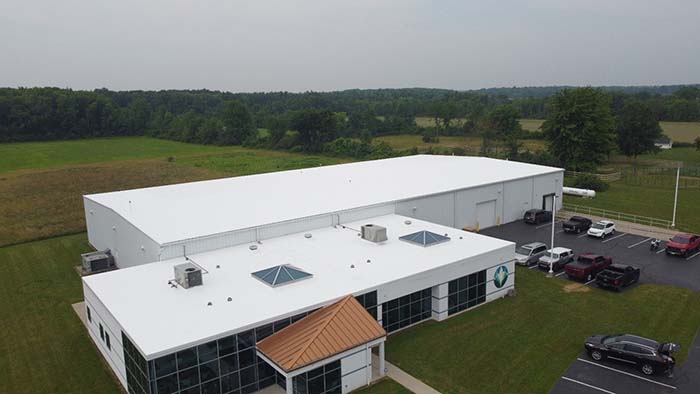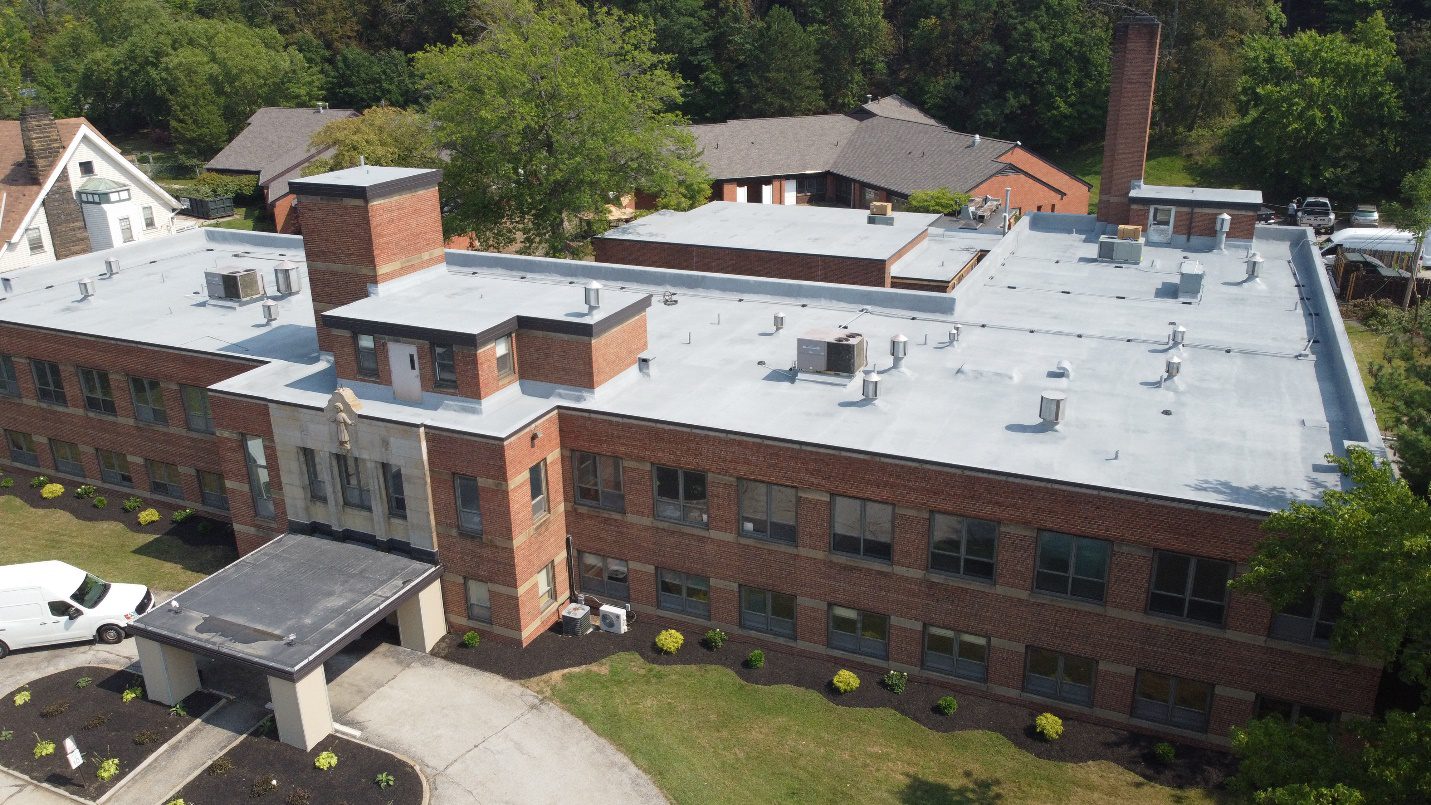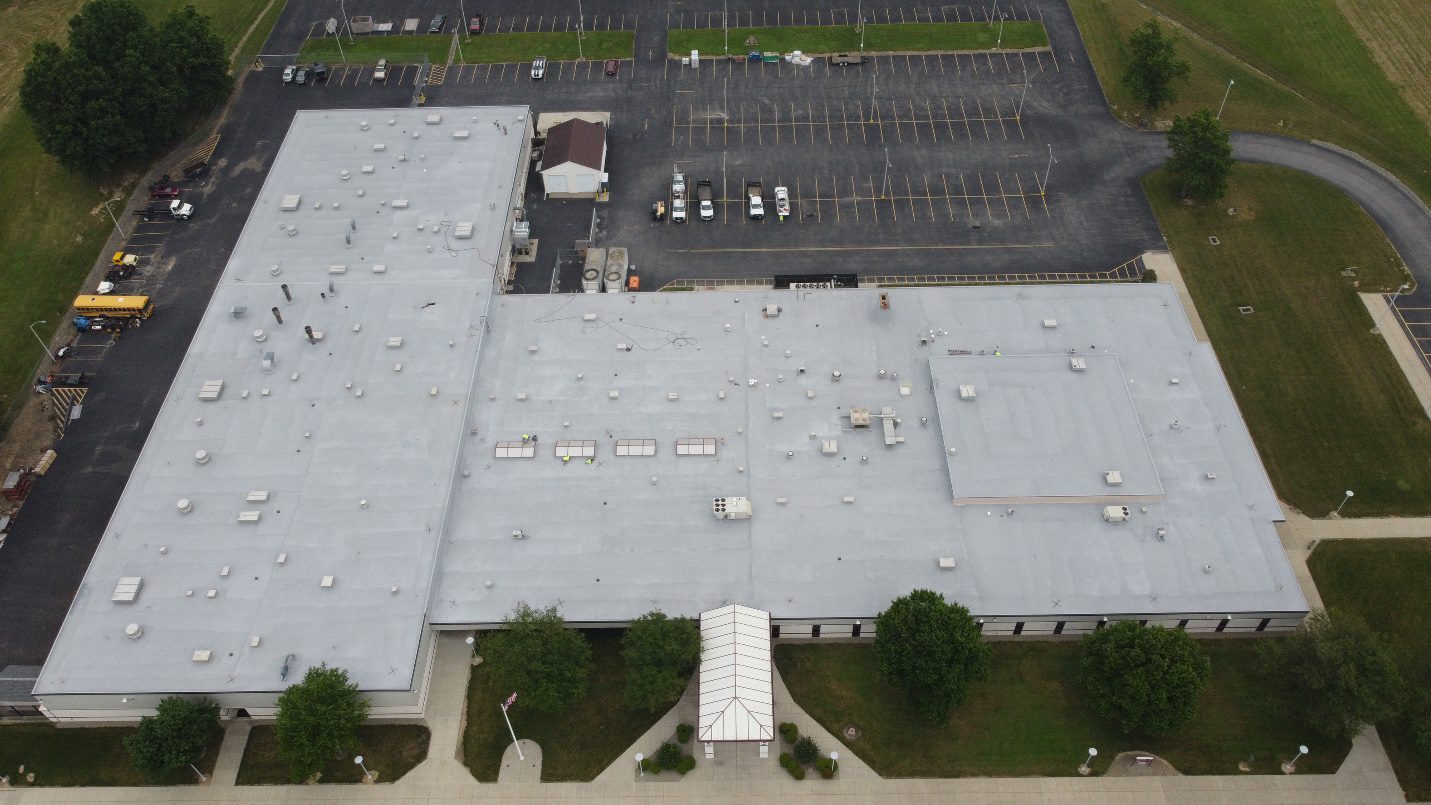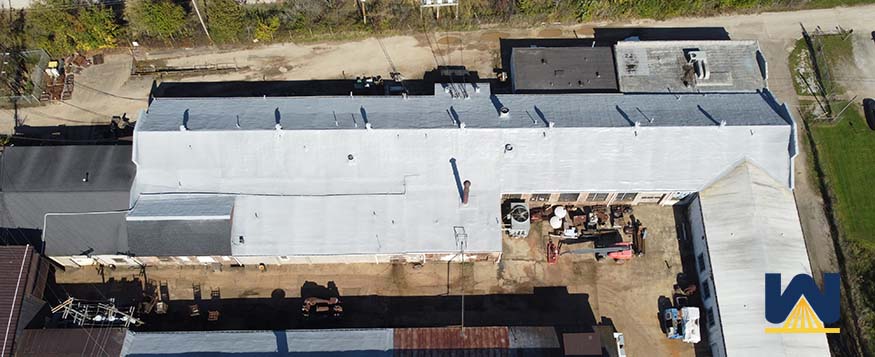Perhaps you’ve heard of spray polyurethane foam roofing, or a silicone roof coating system, and you wonder “Which one is the best for my leaking roof?”
There are many factors to decide, such as:
How much the roof system will cost?
If your existing roof is in decent shape or not?
Where is the location of your roof?
Is aesthetics important?
What type is the existing roof system?
Once you answer all these questions, you should be able to determine if a spray foam roof or a silicone roof coating system is the right choice for your building.
And just so you’re aware, West Roofing Systems has been in commercial roofing since 1979. We specialize in spray polyurethane foam roofing, which uses silicone roof coatings for protection from UV rays. Since around 2008, using silicone roof coating systems on their own has been an attractive, low-cost option for certain situations.
Every article written at West Roofing Systems is produced in-house and is reviewed and approved by a spray foam and coating expert with more than 30 years of experience.
Let’s get started!
How much will the roof system cost?
A spray foam roof costs around $4 -$7 per square foot.
A silicone roof coating system costs around $2 – $4 per square foot.
Many variables increase or decrease the cost, they are:
How much wet insulation to remove and replace?
No roofing system should be installed over wet insulation. Core samples and infrared inspections are used to identify wet areas of the roof.
These areas need to be removed and replaced before the installation of any new roofing system.
If your roof requires 25% of the roof to be removed and replaced, versus another roof that only has 2% saturation, the cost of the 2% roof may be lower.
Need to remove an entire roofing system?
Does your current building already have two roofing systems installed? If so, you’ll need to remove at least one roofing system to install a spray foam roof.
Per building code, you can only have two roofing systems on a commercial building.
While spray foam is considered a “roofing system”, silicone roof coatings are considered maintenance.
If you already have two roofing systems installed, in some cases you can avoid removing a “roof system” by installing a roof coating system.
The cost of your project will be less if you can avoid removing an entire roofing system.
Desired warranty length
Both spray foam and silicone roofing systems use silicone thickness as the #1 factor in determining the length of the warranty.
For example, 20 mils of silicone coating will get either roof a 10-year warranty. While 30 mils of coating will get either roofing system a 20-year warranty.
The longer the warranty length, the more product that needs to be used, the more costly the project will be.
Desired R-value
If you’re looking at increasing the R-value of your current roof, silicone roof coatings will not help you. There is no significant increase in R-value for coating systems.
Spray foam is the opposite.
Spray polyurethane foam has an R-value of 6.5 per inch of thickness. R-value is a measure of a material’s ability to resist airflow.
The higher the R-value, the less heat or cool that will leave your building through the roof. Increasing your roof’s R-value is an excellent way to reduce your facility’s energy costs.
The higher R-value that’s desired, the more spray foam that will be installed on your roof. More product is going to increase the cost of your project.
Now that we know some of the variables that influence cost, how does the current condition of your roof determine which roofing system to choose?
If your existing roof is in decent shape or not?
If your roof is in decent shape, it can be a candidate for a silicone roof coating system, if not, then spray foam may be your only option.
So how can you tell what’s “decent shape or not?”
Are the seams intact?
If the seams are still attached and there’s no lost adhesion, your roof is in decent shape. If there is lost adhesion, water has probably already saturated a large portion of your roof.
If a large enough portion of the roof is saturated (usually around 25% or more), then it’s better to complete a roof tear-off and install a new roofing system.
Has there been routine maintenance?
If a roof has been neglected for several years, it’s likely the drains are clogged, seams have lost adhesion, or small cracks or holes have allowed a large amount of water to enter the roof’s insulation.
If there has been routine maintenance, small repairs have likely been made to limit further saturation of the roof. Also, debris is removed, drains are free to accept rain, and there’s probably been a close eye on seam adhesions.
If no one has been on your roof for several years, you’ll likely have to perform a complete tear-off and it won’t be beneficial for you to install a silicone roof coating system.
How much of the roof’s insulation is wet?
Water can enter through seams, flashings around penetrations, or through holes in the membrane.
A roofing contractor will pull core samples and/or perform an infrared inspection to determine how much of the roof is saturated.
Every roof is different, but in most cases, if more than 25% of the roof is saturated, the best option for a building owner is to avoid the silicone roof coating system.
Now that we know if silicone roof coatings are an option or not, how would the location of your roof determine which roof system to choose?
Where is the location of your roof?
If your roof is located near high-value assets, overspray is a major concern.
If you’re unaware, spray foam is fluid-applied. It’s very light and it can be taken away in high-speed winds.
Spray foam contractors use windscreens and spray foam inside a booth, but sometimes the risk of overspray is a major concern to the roofing project.
An example would be installing a spray foam roof at a car dealership.
A car dealership has hundreds of cars parked near the building. It’s a big risk if foam would happen to be taken away from the wind and land on several cars.
In this case, a silicone roof coating system might be recommended.
While silicone can be fluid-applied just like spray foam, it can be rolled, which eliminates the risk of overspray.
NOTE: West Roofing Systems has installed spray foam roofs at high-risk environments such as car dealerships and airports. These projects require special attention to overspray.
Now that we know the surrounding areas of your roof can help determine which roof system to choose, what about the “looks” of it?
Is aesthetics important?
While a leak-free roof that performs well is most important, some building owners worry about the aesthetics of their roof.
I mean the roof is part of their building.
If aesthetics are important, you may want to lean towards a silicone roof coating system.
We aren’t saying spray foam roofs are ugly by any means ?
Here are a few photos of each roofing system, starting with silicone roof coatings:


Here are some photos of spray polyurethane foam roofs:


Now that you know what each roof system looks like, what if your existing roof system determines which roof system is best?
What type is the existing roof system?
If you have a smooth substrate, you can go with spray foam or silicone.
But what if your roofing substrate isn’t smooth?
If it’s unsmooth, rocky, or coarse, you should lean towards a spray foam roof.
This is because spray foam expands 30x its size within seconds. The usual thickness is 1-2” tall.
This is great for unsmooth roofs because the foam will fill in all the nooks and crannies, creating a smooth surface.
Silicone is fluid-applied but doesn’t expand. It wouldn’t be cost-effective as it would take a very large amount of coating to fill in all the crevices to create a watertight roofing surface with a proper slope.
Long story short…any roof that’s not smooth, you should foam.
What are your next steps?
Hopefully, after this article, you know which roofing system is right for your building.
Here are some articles building owners have about each roofing system:
Silicone Roof Coatings:
Spray Foam Roofing:


